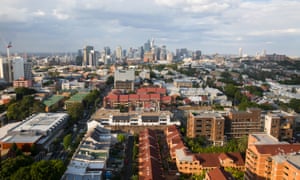Extract from The Guardian
Demand for homelessness services has also soared, with no progress made in a decade, according to Productivity Commission
Demand for homelessness services has soared with more than half of all low-income renters facing rental stress, a new report shows, prompting warnings about the looming cuts to the jobseeker payment.
The Productivity Commission’s report on government services, released on Wednesday, found no progress has been made in improving access to homelessness support or rental stress in the past decade.
Rental stress – defined as spending more than 30% of gross income on rent – was affecting 50.2% of low-income households in the private rental market. That figure is “largely unchanged over the past 10 years”, the report said.
Even with commonwealth rental assistance, many families continued to struggle. About 29% of those who were receiving the payment were still experiencing rental stress, the report found.
The report also found there had been a long-term reduction in public housing stock.
Public housing dwellings decreased from 331,371 in 2011 to 300,403 in 2020, though the report noted the government was getting better at allocating homes to those in greatest need.
The loss of public housing coincided with an increase in the use of community housing – long-term rentals provided by not-for-profit organisations – which almost doubled over the decade.
At the same time, the number of Australians seeking help from specialist homelessness services has increased significantly.
About 290,500 Australians were helped by homelessness services last financial year, up from 279,196 four years earlier.
The level of unmet demand for homelessness services also remains at near-record highs. Last financial year, a third of those who needed accommodation were unable to receive it, up from 28.7% in 2015-16.
Homelessness charities say the report is unsurprising but again shows the urgent need for “repair and investment” in Australia’s housing system.
Looming cuts to the boosted jobseeker payment were also worrying support services.
The payment was cut in September and January but remains $150 a fortnight more than pre-Covid levels. It is due to drop back to the previous rate of $40 a day in April.
Mission Australia executive Ben Carblis said his organisation was already seeing the impact of the reduced jobseeker rate.
Carblis said the jobseeker and jobkeeper payments were “fantastic” during the pandemic and said support workers had heard many stories about the critical role they played in helping disadvantaged Australians.
“We’re really concerned about jobseeker dropping and the impact of that, we’ve seen it already,” he said. “People are anxious and worried about what it means.”
Governments across the country were repeatedly urged to use new social housing construction as a stimulus measure to drive Australia’s post-pandemic recovery.
The Victorian government did just that, committing $5.3bn to build 12,000 new social housing dwellings.
But the federal government has not adopted a similar approach.
In fact, it was criticised by Homelessness Australia following the October budget for what it calculated was a “devastating” $41.3m cut to homelessness services from July 2021.
“Despite soaring demand, tonight’s budget has put services in an impossible situation,” chair Jenny Smith said at the time.
The federal budget did provide a $1bn boost to low-cost finance to build affordable housing through the National Housing Finance and Investment Corporation (NHFIC).
The housing minister Michael Sukkar has said as a result of the boost “2,500 new and existing affordable homes could be supported by community housing providers”.
Despite this, Greens senator Mehreen Faruqi said the government had been “asleep at the wheel” as the crisis worsened.
“Critical Covid support measures like the eviction bans and jobseeker increase are being wound back right now,” Faruqi said. “Meanwhile, our housing system remains broken and our homelessness services are overwhelmed. The federal government’s refusal to address the housing crisis is putting vulnerable people at risk.”
Carblis said the Victorian government’s commitment to social housing construction was welcome but a “drop in the ocean” of what is needed.
“There’s a number widely used … this is in pre-Covid times, that we need another 500,000 homes to really have this impact,” he said.
“[Victoria’s] additional 12,000, we need to celebrate that, but you compare that to the need, and you look at the report that the Productivity Commission has sent out, it shows that the numbers aren’t reducing, it’s stayed flat, and it’s an increase from 2015-16.”
“So more needs to be done. A greater focus needs to occur.”
Modelling released last year by the Community Housing Industry Association and National Shelter found 18,000 jobs could be created each year through a four-year social housing construction program that built 30,000 new dwellings. GDP, the modelling said, would increase by between $5.8bn to $6.7bn.

No comments:
Post a Comment